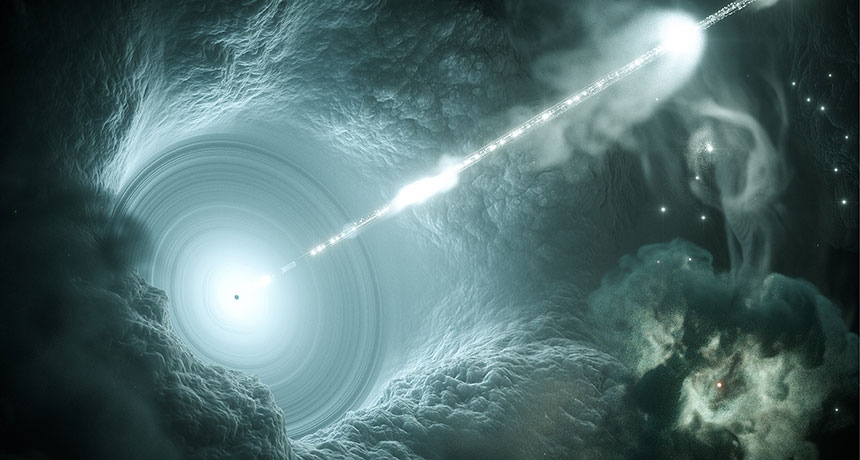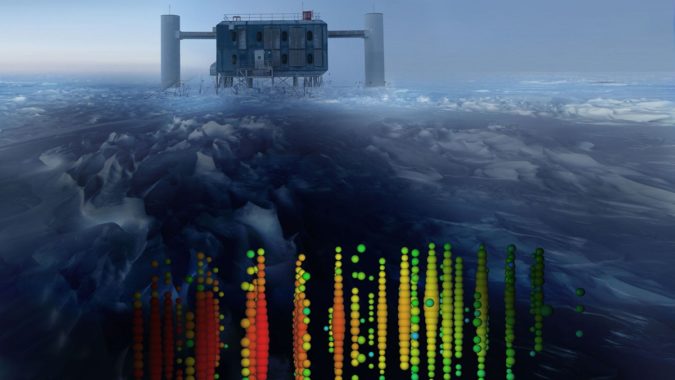A long time ago, in a galaxy far, far away, in the course of an unknown high-energy process, a tiny particle of antimatter was formed. Moving at the speed of light, it overcame a huge distance and on its way pierced the ice sheet of Antarctica. There, it eventually interacted with the ice, causing a characteristic flash recorded by the detectors of the IceCube neutrino Observatory.

The unusual signal observed in 2016, after a long analysis, was identified as the result of the interaction of electrons with antineutrinos — the lightest “representative” of antimatter, predicted theoretically at one time and already obtained in terrestrial laboratories. Every elementary particle of “ordinary” matter that we are made of has its own anti-equivalent. An electron differs from an antielectron (positron) by a positive charge, a proton from an antiproton by a negative charge, respectively, but the difference between a neutron and an antineutron, for example, lies only in the conditional direction of rotation (physicists call it “spin”), which, however, does not prevent them from completely annihilating with the emission of a large amount of energy when they “meet” in the form of electromagnetic radiation.
Antineutrinos behave in a similar way when interacting with “normal” matter. Antimatter is extremely rare in our world — presumably a very small amount of it could have remained after the Big Bang, and it also occurs during some nuclear reactions. Since, like a neutrino, its “antipode” interacts with other types of particles very weakly, such a particle can fly a huge distance across the Universe. More than 60 years ago, the future Nobel Prize winner Sheldon Glashow predicted that when it collided with an electron, a lot of secondary particles would be formed that could be registered. This phenomenon was called the “Glashow resonance”. However, it was not possible to observe it until recently: for this, the antineutrino must have an energy about a thousand times higher than the one that could be achieved in the most powerful particle accelerators (the largest of which is the famous Large Hadron Collider).
However, there are natural processes in the Universe that can give particles such energy — for example, explosions of the largest supernovae. And when the researchers carefully analyzed the energy spectrum of the event recorded by the IceCube Observatory detectors in 2016, they realized that they had finally found what they had been looking for a long time.

The IceCube Neutrino Observatory is located near the South Pole of the Earth and observes a natural ice “cube” with sides of about 1 km, registering even the weakest flashes of radiation in a wide spectral range. Such flashes occur when ice interacts with “all-pervading” particles — neutrinos and antineutrinos.
Where the mysterious antineutrino came from and what processes gave it such a high energy — scientists can’t say yet. In any case, such “natural accelerators” are unknown to us within the Milky Way or another galaxy of the Local Group. The discovery made by the IceCube Observatory is a serious proof that they still exist somewhere. Also, experts have once again made sure that such neutrino observatories help to use space as a natural high-energy laboratory in which new physics can be explored.
IceCube is the world’s largest neutrino telescope. It was built at the Amundsen-Scott station, located at the South Pole of our planet, and covers a layer of ice at a depth of 1450 to 2450 m with a total area of about a square kilometer, through which vertical cables with 5 thousand detectors pass. The construction of the observatory was completed in 2010, its total cost was almost 280 million dollars.
According to www.discovermagazine.com
Follow us on Twitter to get the most interesting space news in time
https://twitter.com/ust_magazine

